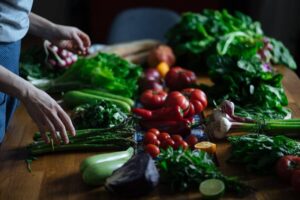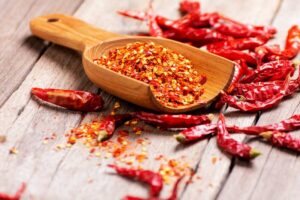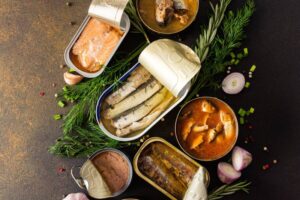Pesticides act in different ways, and the adverse effects on organisms may result in health impacts. Being exposed to them can cause acute poisoning and several chronic effects, including various types of cancer, adverse impacts on fertility and reproduction, neurological disorders, and developmental delays. Moreover, peste can be linked to behavioral problems and chronic respiratory disease.
Certain people, such as children and pregnant women are even more vulnerable to these risks.
The Environmental Working Group is a non-profit, non-partisan organization dedicated to protecting human health and the environment. Their mission is to empower people to live healthier lives in a healthier environment.
The Clean 15 list introduces fruits and vegetables that generally have low levels of pesticides and they also contain thick skin that can be peeled, minimizing even more the pesticide residue. These items are generally safe to buy and consume, and since organic products are considerably more expensive, it’s important for your pocketbook and your health to know when it’s worth it and when not to buy organic.
This year, the studies have been conducted on 46 fruits and vegetables. The items with the highest level of pesticides land on the Dirty Dozen list, meaning you should be cautious when you consume them. This doesn’t mean they are off-limits, but you may want to consider buying their organic version if you consume them regularly.
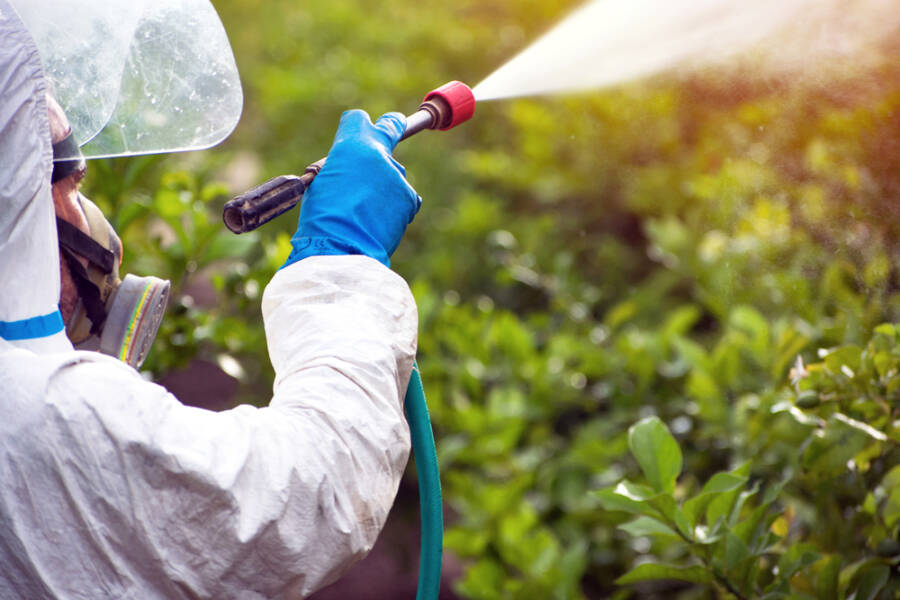
Before we give you the list of the Clean 15, we want to present you the 2024 Dirty Dozen List.
This way, you know what to be aware of, as well. Take a look and if you consume these foods frequently, you better buy their organic version. Multiple farmer markets are great sources for delicious organic products at peak ripeness and this is a way to support local farmers.
These fruits and vegetables are loaded with vitamins and minerals, with fiber that’s essential for our digestion, so, even if you don’t afford to buy them organic, you shouldn’t necessarily skin them, but be more aware of their residues and pay more attention when you wash them. Rinse them under rushing water, soak them in warm water for at least one minute, and consider peeling them, especially if you consume them all the time.
The 2024 Dirty Dozen list
- Strawberries
- Spinach
- Kale, collard & mustard greens
- Grapes
- Peaches
- Pears
- Nectarines
- Apples
- Bell and hot peppers
- Cherries
- Blueberries
- Green beans
You may hear about pesticides all the time, but are you aware of the health risks associated with them? Foods directly exposed to pests occur via handling pesticides for domestic or professional use. There are a variety of sources, including food, and water that might be contaminated, so you should keep an eye on the way things are handled. Agricultural workers and people living in these areas are likely to be exposed to pesticide drifts from fields, soil erosion, and volatilization.
This is the Clean 15 list and an explanation for why these items tend to have lower pesticide levels
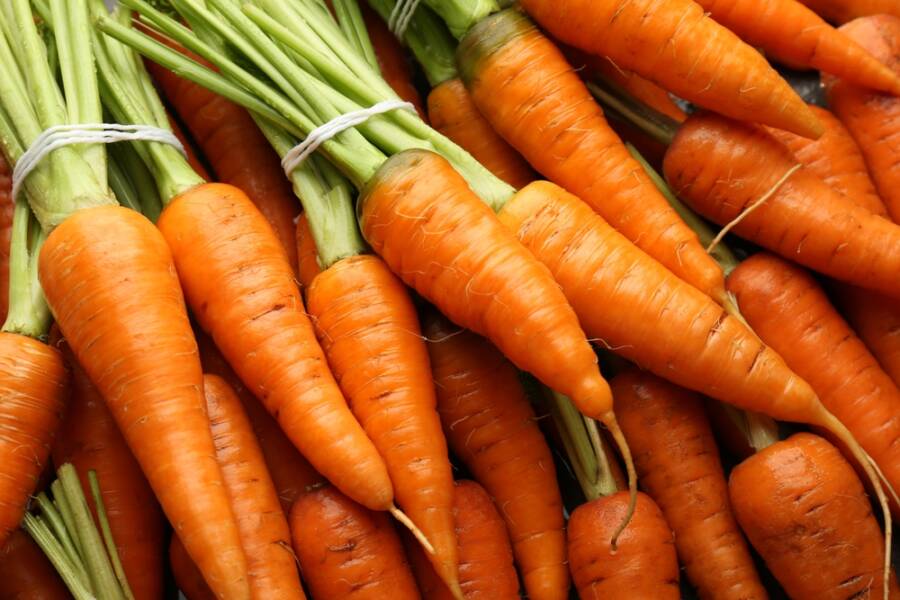
1. Carrots
With their root growing underground, shielding them from direct pesticide exposure, they are pretty safe. Moreover, they also have relatively few pests, so the need to use heavy pesticides is reduced.
You can incorporate them into your daily diet. Carrots can be used as snacks; you can eat carrot sticks with hummus or other dip. You can roast them with olive oil, honey, and herbs, or add them to salads.
2. Sweet potatoes
As we mentioned in the carrots case, these root vegetables are naturally more protected due to growing underground. They tend to require fewer pesticides as well, compared to other crops.
Sweet potatoes are great as breakfast, lunch, dinner, or dessert. Top them with eggs or add them to a smoothie for breakfast, bake them or add them into a grain bowl and stir-fries. For dessert, you can use mashed potatoes to bake nutrient-rich muffins or brownies.
3. Mango
Mangos benefit from a thick skin helping them to protect their inner fruit from pests residues. The part we eat is not exposed to them, so it remains relatively pesticide-free.
You can add frozen mango chunks into smoothies, offering them a tropical flavor. Don’t hesitate to dice mangos, mix them with lime juice, cilantro, and red onion to create a salsa dip amazing for fish or tacos.
4. Mushrooms
They are typically grown in controlled indoor environments. This way, they are limiting the exposure to pesticides and the need for using them.
For a hearty breakfast, add spinach and eggs to your mushrooms and get your nutrients. You can always add them to soups and stews, or include them in stir-fries with vegetables and protein.
5. Watermelon
With an obvious thing and protective ring, the watermelon’s edible interior is well protected from pesticides. The skin prevents residues from reaching the edible part.
Did you know that you can make a refreshing summer salad with watermelon, mint, and feta? You can also enjoy watermelon as a snack or freeze it as a cooling popsicle alternative.
6. Cabbage
With its densely packed leaves, cabbage is less attractive to pests and less likely to need pesticide treatments. Layers and leaves provide extra protection, and cabbage is generally safe.
Add chopped cabbage to stir-fries, use it in wraps, or make a simple coleslaw with shredded cabbage and carrots, using a topping of a light vinaigrette.
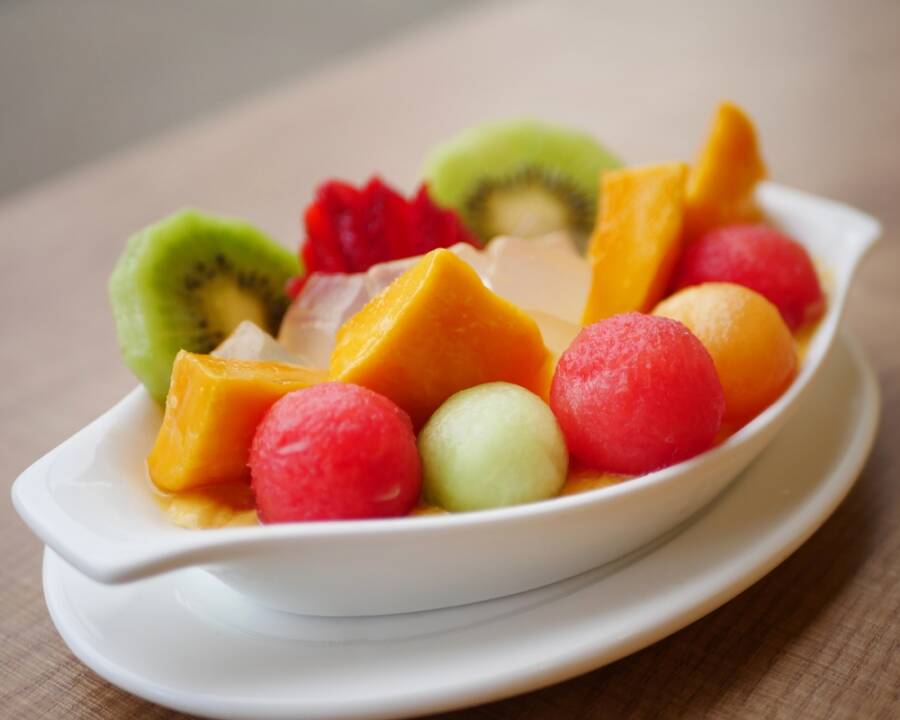
7. Kiwi
Kiwi also has inedible skin acting like a natural barrier. The fruit inside is free from most pesticide contamination.
Slice your kiwi into oatmeal, yogurt, or smoothie bowls. Eat it by itself as a snack and combine it with other fruits for a tropical salad. Layer kiwi on top of tarts and blend it into smoothies.
8. Honeydew Melon
As we mentioned for the standard watermelon, the honeydew one has a thick rind that shields the inner fruit and leads to lower pesticide residues.
For a delicious smoothie, you can blend honeydew with coconut water and lime. You can as well serve cubes of honeydew with a pinch of chili powder, or create an amazing appetizer by pairing it with prosciutto and cheese.
9. Asparagus
With an early harvest and quick growth, asparagus limits its exposure to pests. The fast growth reduces the need for pesticides.
Roast and grill asparagus with olive oil, parmesan, and garlic and use it as a side dish. Blach it and toss it into salads, and add steamed or roasted asparagus to pasta, with lemon and ricotta, creating a distinct, tasty, and nutritive meal.
10. Sweet Peas
Protected by pods, peas are protected and also less exposed to pests and pesticides due to their early harvesting.
You can serve them steamed, with butter and fresh herbs, as a simple side dish. Add them to bowls, pasta, and risotto. Blend peas into a soup with mint and lemon to get a light meal.
11. Papaya
Papaya typically grows in regions where pest pressure is lower. Moreover, they have thick skins protecting them from pesticide residues.
Blend it with coconut milk and ginger for a creamy smoothie, and add papaya to fruit salads. For breakfast, scoop out the seeds and eat the halves with a squeeze of lime and a sprinkle of granola.
12. Onions
Natural pest repellants, onions leave a pungent smell and they grow underground minimizing pesticide use and reducing residue on the edible part.
Use onions in soups, broths, and stews. You can roast them and add caramelized onions to your sandwiches or burgers, or use them in salads.
13. Pineapple
Their thick, spiny skins act as a barrier, protecting the fruit from pesticide contact. Pineapples are amazing for your smoothies, so you can cut them into pieces and freeze them. Grill pineapple slices and eat them as a side dish along with chicken or pork. You can also dice it to salads.
14. Sweet corn
Corn benefits from the husk surrounding each ear and acts as a natural protective layer. It prevents pesticides from reaching the kernels. Sweet corn is absolutely delicious when you grill it and top it with butter, lime, and chili powder. It can be easily integrated into salads and soups.
15. Avocados
With thick skins preventing pesticide residues from affecting the edible part, Avocado is one of the cleanest produce items.
For a great start to the day, make avocado toast or blend them into your smoothies. Slice them into your salads and use them for guacamole or desserts. They are extremely versatile
Every year, the US Department of Agriculture and the US Food and Drug Administration test fruits and vegetables for more than 20 pesticides. The Environmental Working Group analyzes the data on more than 47,000 samples of nonorganic fruits and vegetables.
This list can help you determine if you need to splurge for organic products or save on your weekly trips for groceries.
This is a book that you can order via Amazon with amazing recipes that will keep you healthy: Clean Food: A Seasonal Guide to Eating Close to the Source with More Than 200 Recipes for a Healthy and Sustainable
Read next: 7 Delicious High-Protein Desserts With More Protein Than Eggs



